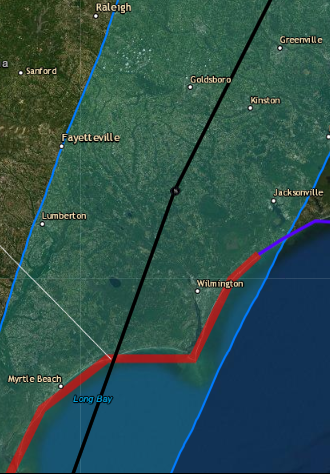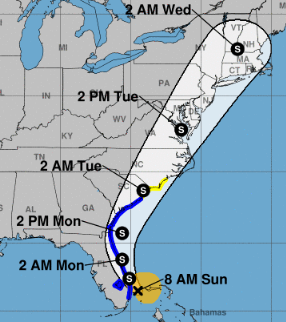
91L is up to an 80 percent chance of developing this week, per the NHC. Once it does, it will be named Danielle -- and we'll have a better idea who the storm would eventually threaten -- if anyone. 1/x 

This morning, modeling seems to indicate a slw strengthening, then a recurve somewhere north of the Bahamas. Obviously that's good news for the Carolinas -- especially after last night's GFS run. 2/x
That said, there are 3 things that need to happen before we can put confidence in not having Danielle threaten.
1. Consolidation
2. Strength
3. Synoptics
Let's take each in order: 4/x
1. Consolidation
2. Strength
3. Synoptics
Let's take each in order: 4/x
1. Consolidation: This morning #91L is a stretched-out wave running SW to NE from 12N to 17N and 53W to 43W. That's a large area for modeling to try to decide where the system will go. Consolidation further north increases the odds that 91L will eventually slide northeast. 5/x
BTW, in that WV graphic, you can also see the effect of an upper-level low in the top left corner. It's shearing the top part of 91L, which could hamper development. That's why the NHC has been upping the 5-day odds, after 91L has slipped past the ULL. 6/x
2. Strength: As any seasoned #Weatherhounds know, the stronger a system gets, the more it wants to pull to the north and east. Weaker storms tend to get steered by lower-level winds, which are pushing west and WNW this time of year in the Atlantic. 91L is in their grip now. 7/x
That ULL and generally dry conditions will do a number of 91L for a few more days before relenting. When that happens, look for then-Danielle to intensify and start looking for a way north. Every additional 12 hours that takes means the system gets about 150 miles closer. 8/x
Take a quick look at this morning's GFS spaghetti chart. The overall tendency is to slide Danielle NW (eventually into a recurve). But within that overall pattern you can see the subtle differences in speed and strength, and the effects those have downstream. 9/x 

That brings us to 3. Synoptics: What's going on downstream? Why did most modeling show a sudden sweep off the Southeast coast? In a word: troughing. Look at the difference between last night's GFS (the Carolina landfall) and today's out-to-sea solution. 10/x 



There are a lot of reasons for this chance, and as we get closer, we can discuss what's happening. For now, just know that (a) if Danielle forms along the timeline and location projected and (2) that sort of troughing occurs, then out-to-sea is the likely outcome.
• • •
Missing some Tweet in this thread? You can try to
force a refresh












